automotive design
EV Supercars

Porsche Taycan Turbo S
Porsche has already built their fully electric supercar and it’s called the Taycan. Currently, the quickest Taycan is the Taycan Turbo S, which boasts 560 kW of power, 1,050 N⋅m of torque, a 0-100 km/h sprint time of just 2.8 seconds and a top speed of 260 km/h. We knew it would be fast, but it will also manage around 400 km of travel before a recharge is needed. Of course, that range will be affected by factors like the weather, number of hills in your commute, how heavy your right foot is, how many on-board features you’re running and how much extra weight is on board – all much the same traits that affect combustion consumption…
Tesla is the biggest name in electric vehicles, and their new Roadster sets the supercar performance benchmark. Revealed back in 2017, the second-generation Tesla Roadster will be capable of skipping through the 0-100 km/h in around 2 seconds, the 0-160 km/h dash in 4.2 seconds, the quarter mile in 8.8 seconds and boast a top speed of around 400 km/h. These records are aided by a phenomenal 10,000 Nm combined torque output for the AWD system and a drivable range before recharging of even over 900 km. The new Tesla Roadster sales will likely begin 2022.
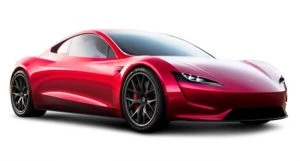
Tesla Roadster
Porsche and Tesla are, perhaps, the more well-known leaders in EV supercar technology.
Ferrari has yet to build a fully electric car. Ferrari is concentrating on their hybrid supercars; the new Ferrari SF90 Stradale being the latest model that incorporates electric motors with the combustion engine layout. Ferrari claims the SF90 Stradale can clean out the 0-100 km/h sprint in well under 3 seconds, the 0-200 km/h dash in less than 7 seconds, while reaching a top speed in excess of 330 km/h. The SF90 Stradale can also travel 12-to-24 km on battery power alone. John Elkann, from Ferrari, says the company will offer its first electric supercar at some stage this decade, but the hybrid models would still form part of its line-up even in 2030. However, that said, Ferrari is looking to sell the Ferrari Purosangue as their first SUV with hybrid engines, along with a fully-electric powertrain for the two following Purosangue models. From the word go, the Purosangue will be designed with the chassis structured to take full electric power. The first hybrid Purosangue should be on sale between 2024 and 2026.
You can’t talk about Ferrari’s electric future without considering Lamborghini’s. Lamborghini has yet to develop an all-electric supercar. Come 2021/2022, Lamborghini is offering a production hybrid supercar called the Lamborghini Sian FKP 37. That sounds like a similar direction to Ferrari; however, Lamborghini did unveil the Terzo Millennio concept car back in 2017.
So, who else is offering fully electric supercars? The following EV supercars have been built up by various entrepreneurs and joint ventures and are, therefore, very rare. Here are some of them to whet your appetite:
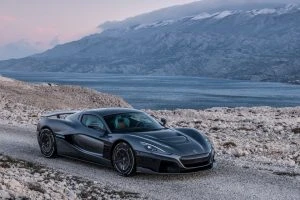
Rimac C_Two
The Rimac C_Two has a 412 km/h top speed backed up with approximately 500 km of electric range.
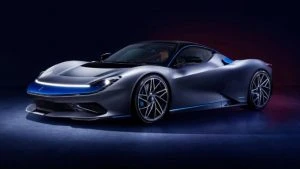
Pininfarina Battista

Lotus Evija
The Lotus Evija has a claimed 1,680 kg weight – pretty light for an EV supercar.
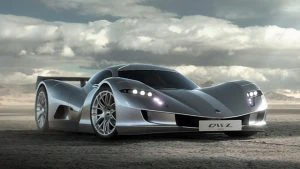
Aspark Owl
Aspark Owl with its 0-100 km/h sprint done and dusted in less than 2 seconds. Top speed over 400 km/h.
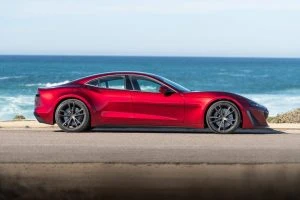
Drako-GTE
The Drako GTE is the brainchild of two Californian-based engineers and entrepreneurs. The car should deliver around 8,880 Nm of torque and a 400 km/h-plus top speed.
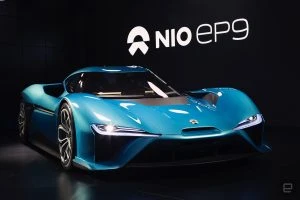
Nio-ep9
The Nio EP9 has actually delivered a 6 m 45.9 sec Nürburgring lap in the hands of Scottish driver Peter Dumbreck. The EV supercar boasts around 6334 Nm of torque and a down-force claimed to be twice that of an F1 car.
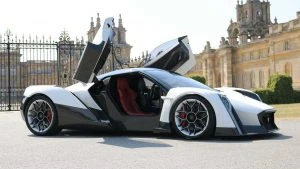
Dendrobium D-1
The Dendrobium has money and inspiration provided to it from Singapore; however it is being engineered and developed in the UK by Williams Advanced Engineering, and with people who were involved in the McLaren F1 design.
The European EV Compass

The best of European engineering and technology has always been considered to be some of the finest the world has to offer (particularly German, Swedish and British engineering). However, with the advancement in microelectronics and electrical know-how that is coming from the Asian parts of the world, there is little time to be had before German, Swedish, Dutch and British (to name a few) technology giants, and automotive and engineering giants, could get swallowed up and placed in the history books.
It might be that to counter the advancement (or even to just keep pace with) of big Chinese, USA, Korean and Japanese automotive, electronics and digital giants, that it’ll likely take a collective pan-European approach in tech-innovation and mobility transformational advancements. The movement is happening in Europe but is it fast enough?
Rather than each country try and do it alone, a pan-European alliance for the electric mobilization of Europe along with the coordination and alignment of national policies would be far more capable of countering the competition from the USA and China. Being able to pool assets, funding, supply chain networks, research and development, battery production, electronic charging point networks, power storage technology, recharging technology and Pan Eurpean policy initiatives that promote market entry for electric vehicles (EVs) will go a long way to keep Europe at the forefront of transport design and innovation.
With the spotlight heavily focusing on environmentally-friendly transport, EVs and driverless cars, and their growing numbers filling the roads up in Asia and in Europe, the rest of the world will also need to catch up with the technology, or change to other manufacturing designs instead. Now and into the future we are seeing how global status, energy and transport are directly linked to each other. Renewable electricity generation and storage at the national level is an assignment across Europe that is a huge task on any given day, but its roll-out also needs to quicken its pace. Politics will play an important role for European countries to pull together to use renewable energy, energy networks and EV and Fuel Cell vehicle technologies.
Demanding logistical changes like this also calls for an adoption of a new social perspective on this new way of doing transport, even new way of life, whether that be in purchasing a new energy efficient car or pooling together to get from A to B or using environmentally friendly public transport. Not everyone can cycle to work! The automotive landscape in Europe is changing, just as it is globally. Government policy will play a leading role in moderating and coordinating the transformation of the automotive industry into new ways of doing transport for the people.
At European local government levels, there also requires the push to implement the urban-transport transformation towards emission-free and fossil-fuel-less transport systems. Urban and development planning needs to promote the electric charging infrastructure, as well as providing big financial benefits and incentives for the public to change from fossil-dependent transport to the use of EVs. Global carbon emission goals are driving the need to steer away from fossil fuels.
In the future, there would seem to be few chances to succeed as a nation if smaller countries choose to go it alone. Then again, maybe that’s what Australia, NZ, UK and Japan might do best; they could be attractive in their own right if they did emission-free transport their own unique way, unconnected with the rest of the world’s EV and driverless vehicle systems.
Aussie’s Rosco aiming for 1000 mph
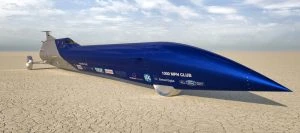
Aussie Invader 5R
It might be a bit hard to call it a conventional car but then it’s not really a conventional car in the sense that the Aussie Invader 5R rocket-car looks more plane/rocket in its appearance. The Aussie Invader 5R rocket-car boasts an insanely long arrow-shaped design with three wheels, large aerodynamic wind deflectors and an engine with close to 150,000 kW! Yes, that’s correct; you did read that figure correctly. To put that in perspective, an Aussie V8 Supercar puts out, on average, around 475 kW of power. Now, if you’ve ever experienced the wonderful roar of these V8s when they blast by around the circuit, then you can understand the aura of such kW potency. But this Aussie Invader 5R rocket-car makes as much power as 316 of these Aussie V8 Supercars put together! The Aussie Invader 5R rocket-car is powered by a single bi-propellant rocket reportedly capable of producing upwards of 62,000 lbf of thrust. That’s over four times more than a Boeing 737 jet!
Founder and designer of the new Aussie Invader 5R rocket-car, Rosco McGlashan, has the world’s fastest land speed record in his sights. He will reportedly be the pilot of the 16-metre long, nine-tonne steel-framed vehicle. And the target? The target top speed of 1609 km/h (1000 mph) would be the fastest of any land-going vehicle, ever. And 1000 mph would see it blitz the current land speed record held by the Noble Thrust SSC on a Nevada salt flat in 1997, which averaged 1223.7 km/h and broke the sound barrier while doing so.
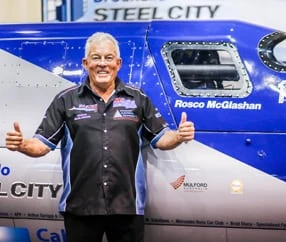
Rosco McGlashan
Rosco McGlashan would like to set the new record next year once all the Covid palaver is over-and-done-with, and it will likely be set somewhere in the Queensland or Western Australian desert. Rosco is no stranger to setting speed records; he is already the holder of the Australian land speed record, where in 1994 he clocked 802.6 km/h behind the wheel of a jet-powered predecessor to the Aussie Invader 5R out on the dry salt flats of Lake Gairdner, near Adelaide. He has, after all, built all of his drag racing, exhibition, and land-speed racing vehicles himself over the years in a shed at his home.
Rosco has accurate computer modelling on the Aussie Invader 5R rocket-car, which suggests that the Aussie Invader 5R rocket-car will have enough power and thrust for launching the car from 0-100 km/h in approximately 1.1 seconds. It should reach its target of 1000 mph in less than 30 seconds. Slowing the Aussie Invader 5R rocket-car down is no mean feat and will thus will require a full 13 km of flat desert just to stop it. A multi-stage deployment of high-speed hydraulic air brakes, mid-speed parachutes, and low-speed disc brakes have been designed to activate progressively to safely bring the vehicle to a halt.
Picking an exact location will depend largely on which organization or individual steps up as the primary sponsor for the effort. As will the practical necessity of having 5 km of flat desert for getting up to speed plus another 13 km to stop it.
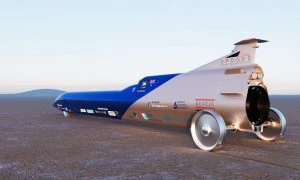
Aussie Invader 5R
Mazda Adds GT SP To CX-5 And Updates Range
Japanese car maker Mazda has released details of an update to the CX-5. This includes the GT SP model being added in. Vinesh Bhindi, the Managing Director for Mazda Australia, says: “Mazda CX-5 has been our most popular model since 2019, and we are excited to expand the brand’s new SP model line into the CX-5 range with the first-ever GT SP.”
SP is a bespoke add-in for Mazda CX-9 plus can be found in the Mazda6 sedan and wagons. For the CX-5 GT SP, there is piano black side mirror covers and black metallic 19-inch alloy wheels, black interior trim highlights and seats finished in a bespoke black Maztex and Grand Luxe Synthetic Suede upholstery. The seats and trim also feature contrasting red stitching.
Power comes from normally or turboed petrol engines that sip 91RON fuel. Other versions of the CX-5 have diesels, front wheel drive or all wheel drive, plus six speed manuals.
In the CX-5 Maxx, and Maxx Sport front-wheel drive, is a direct-injected 2.0-litre Skyactiv-G petrol engine. This features a high 13.0:1 compression ratio to maximise internal efficiency and generates 115kW at 6,000rpm. Peak torque is 200Nm at 4,000rpm. Combined-cycle fuel economy sits at 6.9L/100km for the six-speed manual Maxx as well as the six-speed automatic Maxx and Maxx Sport. Combined CO2 is 160g/km for the manual and 161g/km for the automatic.

Step up a level to the i-Activ AWD Maxx and Maxx Sport and there is the bigger 2.5-litre Skyactiv-G petrol engine. This is also the standard engine for the Touring, GT, GT SP and Akera model grades. Standard transmission is a six speed auto, with power and torque rated as 140kW at 6,000rpm and 252Nm at 4,000rpm.
The Skyactiv-D is a 2.2L unit and has a pair of turbos. This endows the engine with massive flexibility, with 450Nm of torque on tap at 2,000rpm, and peak power of 140kW. It’s available in Maxx Sport, Touring, GT and Akera models with automatic transmission and all-wheel drive. Economy is rated at 5.7L/100km. Go to the Skyactiv-G 2.5T, which is available on GT and above levels, and it produces 170kW at 5,000rpm and 420Nm available from 2,000rpm. Economy is rated at 8.2L/100km on the combined cycle.
Trim and equipment levels include the brand’s latest 10.25 inch Mazda Connect touchscreen for the Mazda CX-5 GT, GT SP and Akera models. Maxx, Maxx Sport and Touring variants will be fitted with an 8.0 inch touchscreen with Apple CarPlay and Android Auto standard across the range. The Maxx now has 17 inch alloys, replacing the steel wheels previously fitted.
Safety packages are high with the CX-5’s five star safety rating backed up by Blind Spot Monitoring, Smart City Brake Support [Forward/Reverse] with night time pedestrian detection, Rear Cross Traffic Alert, Land Departure Warning and Lane Keep Assist. Additional safety equipment includes Front LED fog lamps for Maxx Sport and above levels, front parking sensors for Touring and above, an Active Driving Display for Touring and above, plus a 360 degree monitor and adaptive LED headlights for the Akera.

Specifications start with the Maxx with 17-inch alloy wheels and 225/65 tyres, rain sensing wipers, DAB audio and Bluetooth hands-free phone/audio connection. Maxx Sport adds dual-zone climate control, paddle shift gear selection on the auto, satnav, and an auto-dimming rear vision mirror. Touring models offer heated exterior mirrors, front parking sensors, Traffic Sign Recognition, and Active Driving Display. Seating has Black Maztex and Black Grand Luxe Synthetic Suede upholstery.
GT models offer 19-inch alloy wheels with 225/55 tyres, a sunroof, powered tailgate, front seat heating with 2 position memory for the driver and 10 and 6 way power adjustment (driver and passenger), a Bose sound system, and the aforementioned 10.25 inch touchscreen. Bose provides a 10 speaker sound system.
The new GT SP adds in black metallic 19-inch alloy wheels and black exterior mirror caps, with the interior gaining black Maztex and Black Grand Luxe Synthetic Suede seat upholstery with red contrast stitching in the black leather trim. Akera spices up with a 360 degree View Monitor, Brilliant Dark 19 inch alloys, vented front pews, a heated tiller, heating on the rear seats’ outers ection and dark russet Nappa leather. The driver has a 7.0 inch TFT screen, and genuine wood trim adorns the door and dash. Paint colours include Snowflake White Pearl White Mica, Titanium Flash Mica, Eternal Blue Mica, Deep Crystal Blue Mica and Jet Black Mica plus Sonic Silver Metallic at no extra cost.
Premium metallic paints are available at $495 (MRLP) and include Machine Grey Metallic, Polymetal Grey Metallic and Soul Red Metallic. Pricing starts at $31,190 plus ORC for the Maxx Petrol Manual FWD, $33,190 plus ORC for the auto FWD whilst the AWD sees $36,190 plus ORC. Maxx Sport FWD with auto and petrol is $36,490 plus ORC and the AWD is $39,490. Diesel AWD Maxx Sport starts from $42,490 plus ORC.
Touring Petrol Auto AWD is $41,280 plus ORC, Touring Diesel Auto AWD is $44,280 plus ORC. GT Petrol Auto AWD starts from $46,990 plus ORC, petrol turbo from $46,490 plus ORC, with the diesel from $49,990 plus ORC. GT SP Petrol auto AWD from $47,490 plus OC, with the turbo version from $49,990 plus ORC. The Akera Petrol Auto AWD starts from $49,380 plus ORC, Akera Petrol Turbo Auto AWD from
$51,880 plus ORC, and Akera Diesel Auto AWD from $52,380 plus ORC.